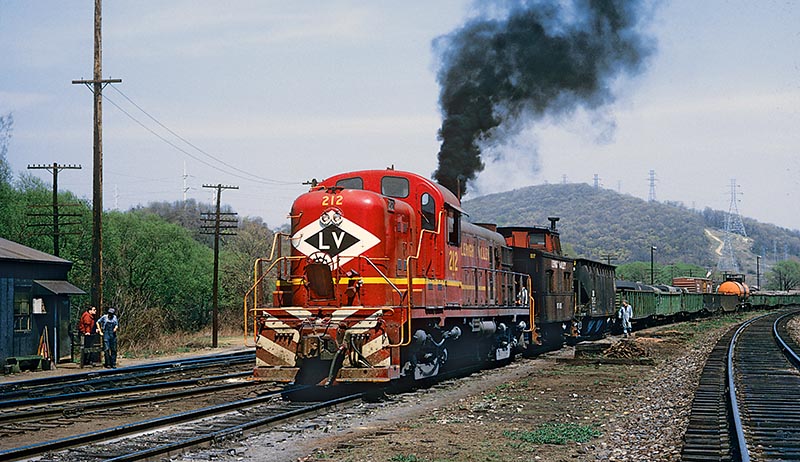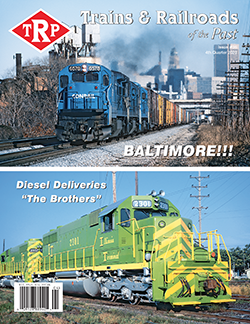 by Mike Bednar/photos by the author
by Mike Bednar/photos by the author
In Second Quarter 2023 (Issue No. 34), I talked about how Yardmaster Charlie Mullen told me that when things got tough at Packerton, Charlie would let “The Brothers” figure out an easy way to get the work done. After all, it would benefit all of the workers to work together to solve a problem. Everyone helped each other. In my opinion, this is one of the most valuable things Charlie taught me.
I found out early in me career that the phrase, “No man is an Island,” is really true in railroading. In every place I worked, it took the cooperation of all the people working together to run a successful operation. And I mean all of the people I dealt with. I worked with probably over a thousand people in my time on the rails and 95 percent of these people were Excellent at performing the work.
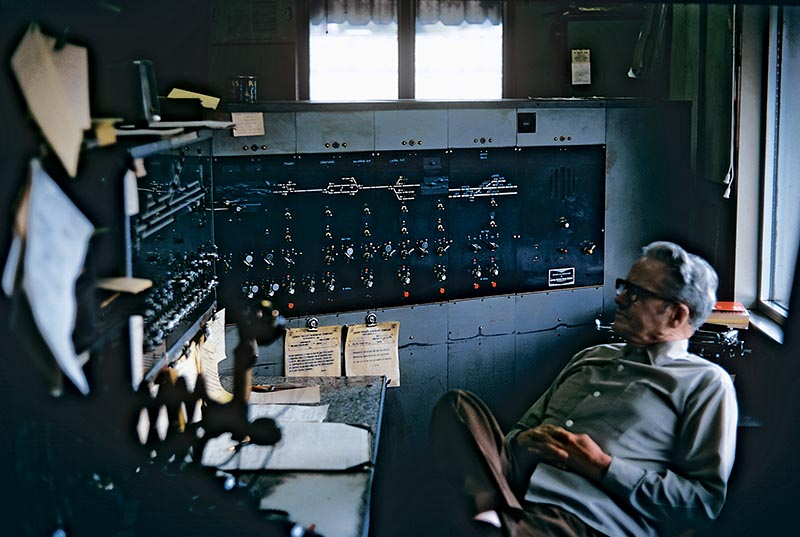
ABOVE: Jimmy Gilbride is inside Coxton Tower on May 21, 1973. Jimmy worked at Gracedale Tower (Mountaintop) until that closed with the Lehigh Valley-Central New Jersey consolidation in 1965. The CTC machine on his right is the ex-CNJ Allentown Dispatcher’s that had Hetchel, Fraser, Crestwood, Solomons Gap, and Laurel Run interlockings. Dupont was added when the Delaware & Hudson and Lehigh Valley started interchanging trains there in January 1973. —Photo by Mike Bednar
Another three percent were marginal, but the 95 percent worked with them and made them look good. So only about two percent were what I would call useless! How they managed to keep their jobs I’ll never know, but it was the good guys who made up for them.
My career covered a vast terrain when the combination of weather, physical characteristics and a time when the railroads sim-ply could not afford to keep their physical plant in shape made it hard to achieve success. However, it was the employees that kept the rail-roads operating through sheer will, whether it was the Lehigh Valley, Jersey Central, Conrail or the Reading & Northern. It was this work ethic that made success out of what may have been failure. The pictures that I have included in this article show just a small fraction of the terrific people who I am proud to have worked with. It would take an encyclopedia-sized book to show all of the “good guys.”
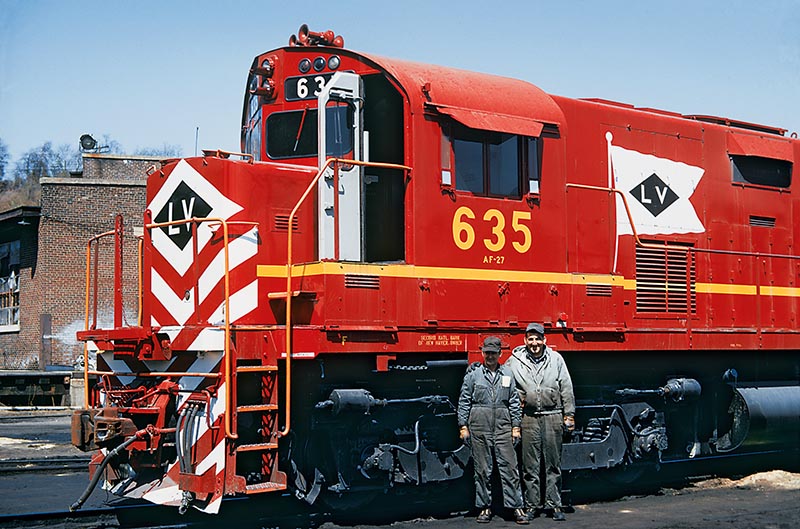
ABOVE: Another important job was the engine mechanics. Those guys held the diesel fleet together with baling wire or any-thing that they could find to keep the units running. The service track men were the best you could find. Bill Johnson (left) and Larry Trinchere (right) are busy servicing the Alcos for Delaware & Hudson run-through Train AM-1 at Bethlehem Engine Terminal on April 14, 1973. The 635 has just gone through an overhaul at Sayre a few days before this. The LV-D&H pool freights provided some much-needed money to upgrade the C628 fleet. —Photo by Mike Bednar
In 1976, when Conrail was formed, I had little faith that it would make it into 1980. But I later learned that good men from these fallen lines could work together to make success out of the ashes of what was left of these bankrupt roads.
In 1991, I went to work for a new railroad, the Reading & Northern (originally called “Reading, Blue Mountain & Northern,”) that had taken over much of the unwanted rail lines in northeast Pennsylvania. Everybody laughed at us with our run-down physical plant and motive power. However, R&N management hired the right people at the right time to make the railroad into what it is now — a hugely successful operation. On this railroad, the “brothers” were counted on to make a success where it would have been easy to fail. By everyone helping out everyone else in all crafts, it was, and is, heartwarming when I see these people today at get-togethers…
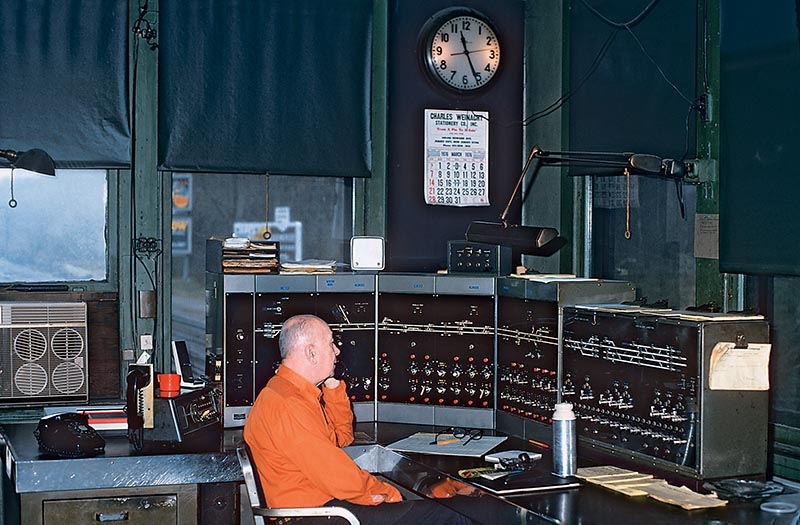
ABOVE: The craft of “Block Operator,” or more commonly called “Towerman,” was one of the key jobs that kept the railroad flowing. I’m truly glad that I worked tower jobs. We’re in Newark (NK) Tower on April 1, 1976. Louie Lorenz is the towerman. Louie and the guys at “NK” were experts at maneuvering the freight trains in between the passenger train traffic after the Aldene Plan went into effect in 1967. —Photo by Fred Wilczewski, collection of Mike Bednar.


